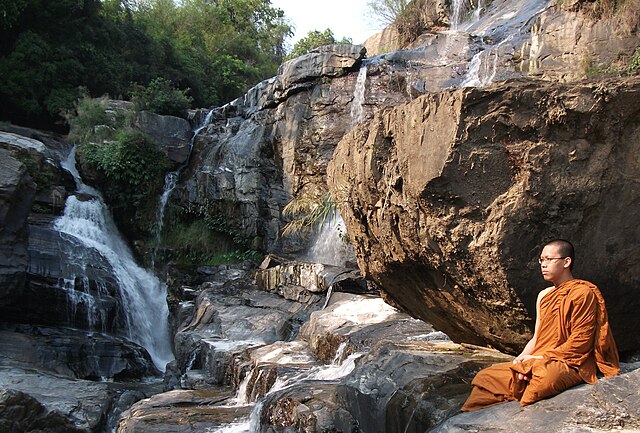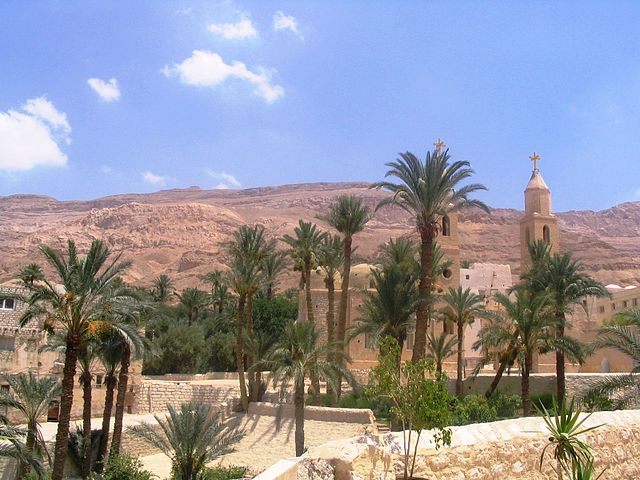Buddhist monasticism is one of the earliest surviving forms of organized monasticism and one of the fundamental institutions of Buddhism. Monks and nuns, called bhikkhu and bhikkhuni, are responsible for the preservation and dissemination of the Buddha's teaching and the guidance of Buddhist lay people. Three surviving traditions of monastic discipline (Vinaya), govern modern monastic life in different regional traditions: Theravada, Dharmaguptaka, and Mulasarvastivada.
Monks outside the temple at the Tibetan Buddhist monastery, Rato Dratsang, in India, January 2015.
At the peak of its power, Japan's Enryaku-ji was a huge complex of as many as 3,000 sub-temples and a powerful army of warrior monks (僧兵, sōhei).
Young Buddhist monks in Tibet practising formal debating
A Buddhist monk in Kaohsiung, Taiwan, wearing the robes of an abbot in a monastery
Monasticism, also called monachism or monkhood, is a religious way of life in which one renounces worldly pursuits to devote oneself fully to spiritual work. Monastic life plays an important role in many Christian churches, especially in the Catholic, Orthodox and Anglican traditions as well as in other faiths such as Buddhism, Hinduism, and Jainism. In other religions, monasticism is criticized and not practiced, as in Islam and Zoroastrianism, or plays a marginal role, as in modern Judaism.
Forest dwelling was a common practice in early Buddhism, and it is still followed by some Buddhist sects such as the Thai Forest Tradition.
Young Buddhist bhikkhus in Tibet
Trappist monk praying in his cell.
The Monastery of Saint Anthony in Egypt, built over the tomb of Saint Anthony, the "Father of Christian Monasticism"







